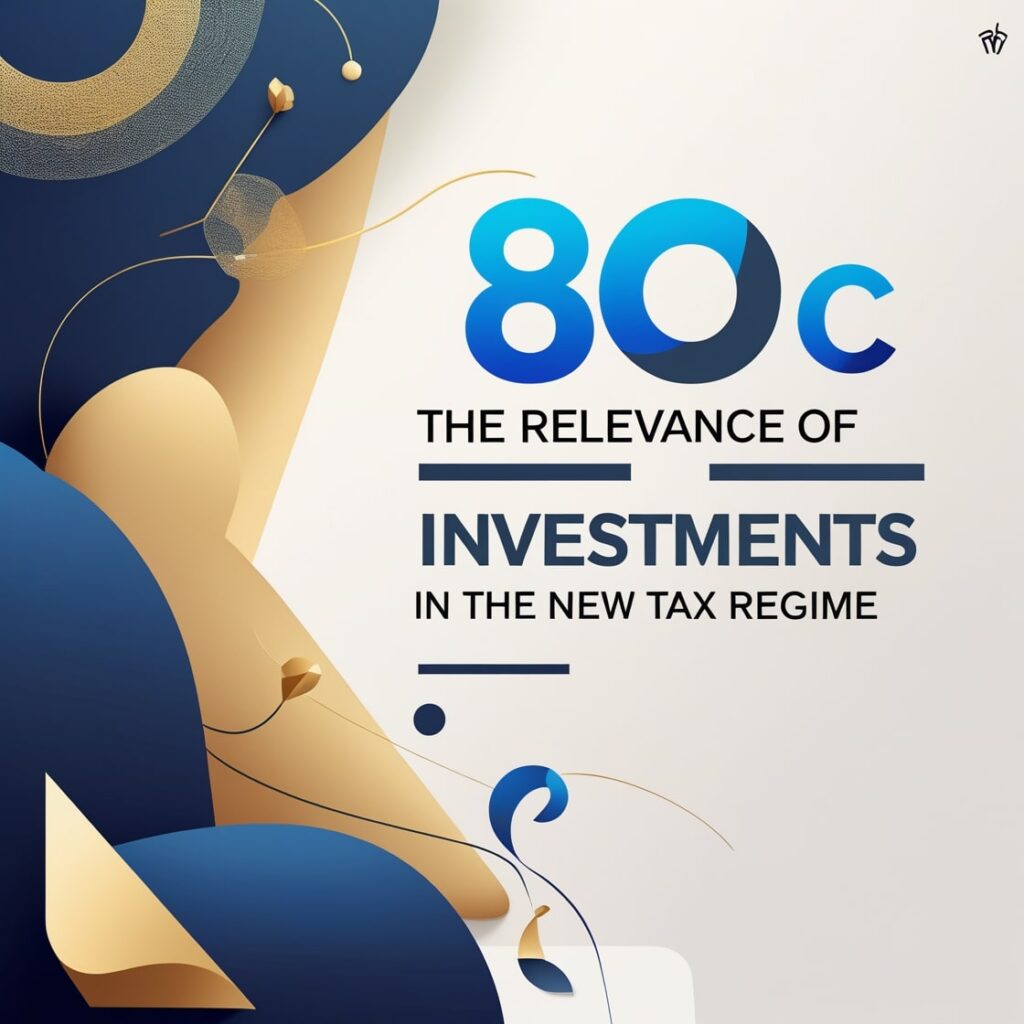The Relevance of 80C Investments in the New Tax Regime

Quick Overview
The introduction of a new tax regime in India has led many taxpayers to shift away from traditional tax-saving investments under Section 80C. However, certain investments—specifically Equity Linked Savings Scheme (ELSS), National Pension System (NPS), and Public Provident Fund (PPF)—retain their significance in building a robust investment portfolio. This summary explores why these three options continue to be valuable despite the absence of tax benefits under the new regime.
Key Points
- Shift to New Tax Regime: A significant portion of taxpayers (72%) has transitioned to the new tax regime, which offers lower tax rates but eliminates exemptions like those under Section 80C.
- Long-Term Wealth Creation: Despite the lack of tax advantages, ELSS, NPS, and PPF are still effective tools for long-term wealth accumulation and financial security.
- Investment Characteristics: Each of the three investment options has unique features that cater to different investor needs—ranging from equity exposure to retirement security and stable returns.
- Performance Metrics: Historical performance data shows that these investments have provided competitive returns, supporting their inclusion in investment portfolios.
- Strategic Benefits: These instruments encourage disciplined investing, long-term planning, and risk management, which are essential for financial well-being.
Detailed Breakdown
1. ELSS: Encouraging Long-Term Equity Investing
Overview: The Equity Linked Savings Scheme (ELSS) is a type of mutual fund that invests primarily in equities and comes with a mandatory three-year lock-in period.
- Investor Behavior: Market volatility can lead to impulsive decisions among new investors. The three-year lock-in period encourages commitment, allowing investments to grow without the temptation to redeem during market dips.
- Performance: On average, ELSS funds have returned over 13% over the last decade, demonstrating their potential for wealth creation.
- Key Features:
- Market Exposure: ELSS provides exposure across various sectors and market capitalizations.
- Long-Term Focus: The structure of ELSS promotes a long-term investment mindset, which is crucial for capitalizing on the benefits of equity markets.
2. NPS: A Fortress for Retirement Savings
Overview: The National Pension System (NPS) is designed to encourage long-term savings for retirement and features strict withdrawal conditions.
- Withdrawal Restrictions: Funds in NPS cannot be accessed until the investor reaches the age of 60, with limited withdrawals allowed under stringent conditions. This prevents premature depletion of retirement savings.
- Balanced Allocation: NPS offers a mix of equity and debt investments, providing a balanced approach to wealth creation and risk management.
- Employer Contributions: Contributions made by employers (up to 14% of basic salary) continue to receive tax benefits under the new regime, further enhancing the value of NPS.
- Key Features:
- Retirement Discipline: The structure of NPS instills a disciplined approach to retirement savings.
- Long-Term Growth: NPS has historically provided returns of around 11.77%, making it a reliable option for retirement planning.
3. PPF: Stability and Security
Overview: The Public Provident Fund (PPF) is a government-backed savings scheme that offers a fixed interest rate and tax-free returns.
- Interest Rate: Currently, PPF offers an interest rate of 7.1%, which is guaranteed and free from market risks, making it an ideal choice for conservative investors.
- Lock-In Period: PPF has a 15-year lock-in period, although premature closure is allowed under specific circumstances, providing a degree of flexibility.
- Key Features:
- Risk-Free Investment: PPF is backed by the government, ensuring stability and security for investors.
- Tax-Free Earnings: Interest earned on PPF is tax-free, contributing to the overall attractiveness of this investment for those seeking long-term security.
Important Details & Evidence
Performance Comparison
| Investment Option | Returns | Lock-In Period | Tax Benefits under New Regime | Rationale for Inclusion |
| ELSS | 13.62%* | 3 years | Not available | Encourages long-term equity investing |
| NPS | 11.77%* | Until age 69 limited withdrawals | Only on employer contributions (14%) | Promotes retirement savings discipline |
| PPF | 7.1% tax-free^ | 15 years; specific conditions | Not available | Provides stable, risk-free returns |
*Star Mark indicates the 10-year category average as of January 8, 2025. For NPS, a 75% allocation in equities is assumed, with 12.5% each in corporate and government debt. ^Interest rate applicable for January to March 2025.
Conclusion
Despite the shift to the new tax regime, investments such as ELSS, NPS, and PPF continue to be integral components of a well-rounded investment strategy. They not only aid in wealth creation but also promote disciplined investing and financial security. Investors should consider these options for their unique benefits, including long-term growth potential, retirement planning, and stability, ensuring that their portfolios remain resilient in changing economic landscapes.